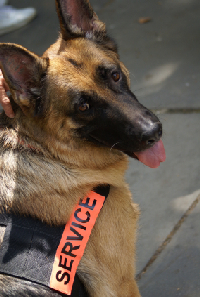FOR IMMEDIATE RELEASE FOR INFORMATION CONTACT:
Date: September 24, 2009 DBTAC National Network of ADA Centers
1-800-949-4232
PUBLIC COMMENT INVITED ON PROPOSED CHANGES TO ADA REGULATIONS
The public has been given 60 days to comment on proposed revisions to regulations implementing the Americans with Disabilities Act of 1990 (ADA), as amended by the ADA Amendments Act of 2008. The regulatory changes, contained in a Notice of Proposed Rulemaking just announced by the U.S. Equal Employment Opportunity Commission (EEOC), focuses on providing individuals seeking protection against employment discrimination under Title I of the ADA with a more expansive definition of “disability.” Written comments must be submitted on or before November 23, 2009.
The ADA is an antidiscrimination statute passed by Congress and signed into law by the President in July 1990. The EEOC is responsible for enforcing Title I of the ADA, which prohibits employment discrimination against individuals with disabilities. The ADA requires employers to make reasonable accommodations to employees and job applicants with disabilities.
The ADA Amendments Act, which went into effect Jan. 1, 2009, and the regulatory revisions embedded in the proposed rule now available for public comment, makes it easier for an individual alleging employment discrimination based on disability to establish that he or she meets the ADA’s definitions of “disability.” The ADA Amendments Act also modifies the Rehabilitation Act of 1973, which prohibits employment discrimination in the federal workforce on the basis of disability.
The regulatory changes in the proposed rule emphasize that the definition of disability—an impairment that poses a substantial limitation in a major life activity—must be construed in favor of broad coverage of individuals to the maximum extent permitted by the terms of the ADA, and should not require extensive analysis.
The regulatory changes expand major life activities to include “major bodily functions, and clarify that mitigating measures, such as medications and devices that people use to reduce or eliminate the effects of impairment, are not to be considered when determining whether a person has a disability. They also clarify that impairments that are episodic or in remission, such as epilepsy, cancer, and many kinds of psychiatric impairments, are disabilities if they would “substantially limit” major life activities when active.
Finally, the regulation revisions provide a more straightforward way of demonstrating a substantial limitation in the major life activity of working, and implements the ADA Amendment Act’s new standard for determining whether someone is regarded as having a disability.
The Notice of Proposed Rulemaking containing the regulatory changes is posted on the EEOC website, http://www.eeoc.gov/ada/amendments_notice.html along with a question-and-answer guide about the proposal and instructions for submitting public comments to the Commission.
You Can Submit Comments by Mail, Fax and Electronically, Here’s How:
Written comments should be submitted to Stephen Llewellyn, Executive Officer, Executive Secretariat, Equal Employment Opportunity Commission, 131 M Street, NE., Suite 4NW08R, Room 6NE03F, Washington, DC 20507.
Comments submitted by fax As a convenience to commenters, the Executive Secretariat will accept comments transmitted by facsimile (``FAX'') machine. The telephone number of the FAX receiver is (202) 663-4114. (This is not a toll-free number.) Only comments of six or fewer pages will be accepted via FAX transmittal to ensure access to the equipment. Receipt of FAX
transmittals will not be acknowledged, except that the sender may request confirmation of receipt by calling the Executive Secretariat staff at (202) 663-4070 (voice) or (202) 663-4074 (TTY). (These are not toll-free telephone numbers.)
Comments submitted electronically You may also submit comments and attachments electronically at http://www.regulations.gov, which is the Federal eRulemaking Portal. Follow the instructions online for submitting comments. Copies of comments submitted by the public will be available for review at the Commission's library, 131 M Street, NE., Suite 4NW08R, Washington, DC 20507, between the hours of 9:30 a.m. and 5 p.m. or can be reviewed at http://www.regulations.gov.








 please contact the program at 253-858-4240 or through email at prisonpetpartnership@yahoo.com. There is a picture with the article.
please contact the program at 253-858-4240 or through email at prisonpetpartnership@yahoo.com. There is a picture with the article.